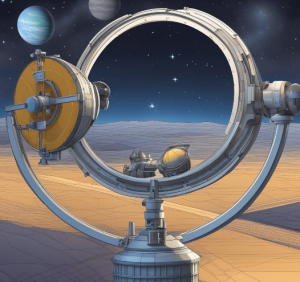Planetary Stations and Changes in Declination: A Clear View

Understanding Planetary Stations and Changes in Declination
Planetary stations and changes in declination are two important concepts in astronomy and astrology. A planetary station occurs when a planet appears to stop moving in the sky, either before it starts moving in the opposite direction (retrograde station) or before it resumes its normal forward motion (direct station). Changes in declination, on the other hand, refer to the apparent north-south movement of a celestial object relative to the celestial equator.
In astrology, planetary stations and changes in declination are believed to have significant effects on individual lives and events. For example, a retrograde station of Mercury is often associated with communication breakdowns, while a direct station of Saturn may signify the end of a difficult period. Changes in declination, meanwhile, are thought to affect the intensity and duration of planetary aspects, as well as the overall energy of a particular time period.
Changes in Declination and Their Effects
Changes in declination can have a range of effects on the planets and celestial objects involved. For example, when a planet moves north of the celestial equator, it is said to be in positive declination, while a southward movement is considered negative declination. These changes can affect the latitude of a planet and its position relative to the ecliptic, which is the apparent path of the Sun across the sky.
In astrology, changes in declination are believed to affect the strength and nature of planetary aspects, as well as the overall energy of a particular time period. For example, when two planets are in parallel (i.e., they have the same north-south position relative to the celestial equator), they are said to be working together and their energies are amplified. Conversely, when two planets are in contra-parallel (i.e., they have opposite north-south positions), their energies may conflict or cancel each other out.
Key Takeaways
- Planetary stations occur when a planet appears to stop moving in the sky, either before it starts moving in the opposite direction (retrograde station) or before it resumes its normal forward motion (direct station).
- Changes in declination refer to the apparent north-south movement of a celestial object relative to the celestial equator and can affect the latitude of a planet and its position relative to the ecliptic.
- Changes in declination are believed to affect the strength and nature of planetary aspects, as well as the overall energy of a particular time period in astrology.
Understanding Planetary Stations and Declination
The Role of Declination in Astronomy
Declination is one of the two essential angles that astronomers use to locate celestial objects on the celestial sphere. It is the angular distance of a celestial object north or south of the celestial equator. The celestial equator is an imaginary line that is equidistant from the celestial poles and is projected onto the celestial sphere.
Declination is measured in degrees, minutes, and seconds of arc, just like latitude on Earth. The declination of a celestial object can be positive or negative, depending on whether it is north or south of the celestial equator. For example, the declination of the star Polaris is approximately +89 degrees, while the declination of the star Sirius is approximately -17 degrees.
Planetary Stations and Their Significance
Planetary stations occur when a planet appears to stop moving in the sky and then changes direction. These apparent changes in direction are caused by the Earth’s motion around the Sun and are known as retrograde and direct motion. Retrograde motion occurs when a planet appears to move backward in the sky, while direct motion occurs when a planet appears to move forward in the sky.
The significance of planetary stations lies in the fact that they mark important points in a planet’s orbit around the Sun. For example, when Mercury stations retrograde, it marks a time of reflection and introspection. When Saturn stations direct, it marks a time of increased productivity and progress.
Declination also plays a significant role in the study of planetary stations. The ascending node and descending node of a planet’s orbit are points where the planet’s path intersects the ecliptic, the apparent path of the Sun in the sky. The ecliptic is inclined at an angle of approximately 23.5 degrees to the celestial equator, which means that planets can have positive or negative declinations when they cross the ecliptic.
In conclusion, understanding planetary stations and declination is crucial for astronomers and stargazers alike. By studying the positions of planets and stars in the sky, we can gain a deeper understanding of the workings of our solar system and the universe beyond.
Changes in Declination and Their Effects
Effects on Earth’s Orientation and Space
Declination is the angular distance of a celestial object from the celestial equator. Changes in declination occur due to the movement of the Earth’s magnetic poles and the planet’s rotation. The magnetic declination at a given location changes over time, which can have a significant impact on Earth’s orientation and space.
The magnetic north pole is currently located in the Arctic Ocean, and the magnetic south pole is located in Antarctica. As the magnetic poles move, they cause changes in declination, which can affect the orientation of Earth’s magnetic field. These changes can also have an impact on the Earth’s atmosphere, including the ionosphere and the aurora borealis.
Changes in declination can also affect the position of celestial objects in the sky. For example, the right ascension and declination of stars are used to locate them in the celestial sphere. Changes in declination can cause stars to appear in different positions relative to the celestial equator and the ecliptic.
Impact on Astrology and Lunar Standstill
Changes in declination can also have an impact on astrology and lunar standstill. Astrologers use declination to determine the position of celestial objects in relation to the Earth. The position of celestial objects can affect the interpretation of astrological charts, including the position of the planets, the houses, and the transits.
Lunar standstill occurs when the declination of the Moon is at its maximum or minimum point. This occurs every 18.6 years and can have an impact on the tides, as well as the position of the Moon in the sky. During a lunar standstill, the Moon appears to move along the horizon, which can affect the interpretation of astrological charts.
In conclusion, changes in declination can have a significant impact on Earth’s orientation and space, as well as the interpretation of astrological charts. It is important to understand the effects of changes in declination to accurately interpret celestial objects and their positions.
Frequently Asked Questions
How is magnetic declination calculated?
Magnetic declination is calculated as the angle between magnetic north and true north at a given point on the Earth’s surface. It is measured in degrees and is positive when the angle is east of true north and negative when it is west.
What is the significance of right ascension and declination in astronomy?
Right ascension and declination are used to specify the position of celestial objects in the sky. Right ascension is measured in hours, minutes, and seconds, and is similar to longitude on Earth. Declination is measured in degrees, and is similar to latitude on Earth.
How can a declination map be used in navigation?
A declination map shows the variation in magnetic declination across the Earth’s surface. This information can be used to correct compass readings for the local magnetic declination, which can help navigators determine true north and navigate accurately.
What factors affect the value of Earth’s magnetic field in tesla?
The value of Earth’s magnetic field in tesla is affected by a number of factors, including the Earth’s rotation, the flow of molten iron in the Earth’s core, and the interaction between the Earth’s magnetic field and the solar wind.
What is planetary declination and how does it affect astrological charts?
Planetary declination is the angle between the plane of a planet’s orbit and the plane of the ecliptic. It is an important factor in astrological charts, as it can affect the interpretation of planetary aspects and the overall energy of a chart.
How does the magnetic declination shift impact compass readings?
The magnetic declination shift can impact compass readings by causing errors in navigation. As the magnetic declination changes over time, it is important for navigators to correct for this variation in order to determine true north and navigate accurately.
